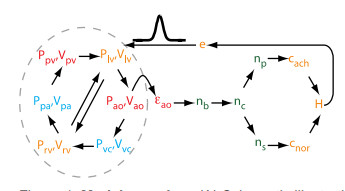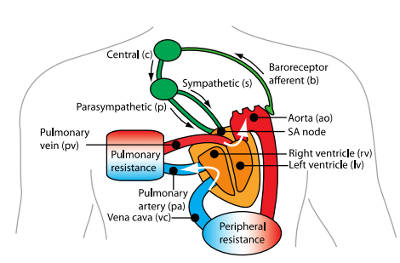| Computer Model Explains High Blood Pressure |
| Written by Mike James | |||
| Sunday, 12 May 2013 | |||
|
If you are not a medic then presumably you, like me, thought that we knew most of the basics of what causes high blood pressure as we age. It turns out that we really didn't and now a new computer model casts light on the real reason for high blood pressure. There are many causes of high blood pressure, but the majority of cases are unexplained. The actual situation is that we really don't know the underlying mechanism that causes high blood pressure and simply have a long list of correlated, i.e. implicated, factors - age, lack of exercise, obesity, and so on. You might think that the way to find out what causes high blood pressure would be to perform biological experiments, but Klas H. Pettersen, Scott M. Bugenhagen, Javaid Nauman, Daniel A. Beard & Stig W. Omholt at the Norwegian University of Life Science have tackled the problem in a completely different way. They have built a computer model of blood flow, incorporating sufficient detail to verify that it accurately simulates known changes in BP in given situations. What is known about BP control is that there are pressure sensors in the walls of the major arteries. These are supposed to provide the feedback that the heart needs to keep the BP within normal limits - the so called baroreflex. However, it is also known that as the body ages the feedback or control mechanism seems to fail and the BP rises.
Model variables and relationships The simple theory that the model was designed to test is whether or not this failure of the system to regulate itself could be due to the loss of elasticity of the blood vessels. Could it be that the sensors respond to the stress in the walls of the blood vessels, and if these harden and lose their elasticity the feedback produced by the sensors is reduced? "By use of empirically well-constrained computer models describing the coupled function of the baroreceptor reflex and
There is likely to be a contribution to the increase in BP with age from arterial stiffening but what the model showed clearly was that in fact it was sufficient to account for all of the loss of regulation. What this means is that the baroreflex may be operating perfectly but the changes in the mechanical properties of the tubes that carry the blood cause it to underestimate the BP. "The mechanogenic hypothesis is intimately related to the fact that the baroreceptors do not respond to changes in blood pressure, but to changes in strain, and thus are likely to misinform the sympathetic system about the actual state of affairs when located in less compliant vessels." The evidence that the model accurately captures the behavior of the complete system is that it reproduces the results of major surveys of BP with age and it models the sensitivity of the system to the Valsalva maneuver in subjects of varying ages. The Valsalva maneuver increases the BP when the subject breaths out hard against a closed airway. This could provide new routes to creating medication to lower BP in an aging population. "Finally, our results suggest that arterial stiffness represents a therapeutic target by which we may be able to exploit an otherwise intact machinery for integrated blood pressure regulation." There is clearly still a lot of work for computer modeling to do in understand physiology.
More InformationArterial stiffening provides sufficient explanation for primary hypertension Related ArticlesIs Excel To Blame For Our Economic Pain? Simulation Reveals Best Strategy For Congested Traffic The Truth About Spaun - The Brain Simulation
To be informed about new articles on I Programmer, install the I Programmer Toolbar, subscribe to the RSS feed, follow us on, Twitter, Facebook, Google+ or Linkedin, or sign up for our weekly newsletter.
Comments
or email your comment to: comments@i-programmer.info
|
|||
| Last Updated ( Tuesday, 14 May 2013 ) |

 The change in strain v pressure with age
The change in strain v pressure with age

